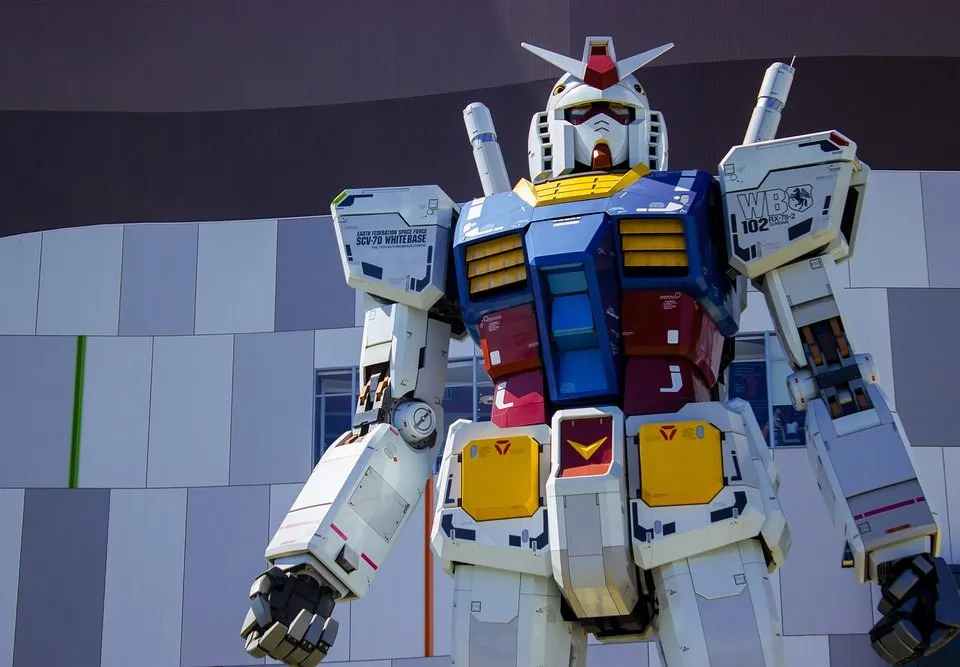After discovering recently that there would be a live action Gundam film adaptation, I began thinking about giant robots. It doesn't take much to nudge my brain in that direction. I've written about the topic at length before:
That Time the Air Force Built a Giant, Nuclear Powered Mech
Before There Was Iron Man, There Was Hardiman: The History of Powered Exoskeletons
...However, while I covered the tactical disadvantages of giant robots due to their height making them an easy target for tanks, there's more wrong with the concept of using giant military robots in a military capacity than that.
I'm not going to dispute that giant robots are cool. But cool usually equals expensive and impractical, and this is one of those cases. Of course surrounding soldiers in metal armor, under powered mobility, with powerful weapons is a good idea. But if you take that concept and squash it down so it's low profile enough to be defensible, you get a tank.
Tanks already serve the purpose that mechas would, and do a better job of it. Bipedal locomotion and the ability to lift/manipulate heavy objects is not especially useful in a combat scenario when a tank can just climb the fuck over or smash it's way through nearly any obstacle.
But this is all well-worn ground. The bigger issues with giant robots have to do with how material properties change as the scale increases.
Our minds often have trouble accounting for speeds and scales beyond what we experience in every day life. This is why the behavior of particles at the smallest scales we can model so thoroughly baffle us. It's also why the wobbling bridge seen above is so surreal.
After all, a piece of concrete or asphalt small enough for you to pick up is extremely rigid. It's as solid as you can imagine anything being. Yet if you build large enough contiguous masses of concrete and asphalt, on that scale it behaves very differently.
Likewise with metals. Doubly so if whatever you're building has moving parts, and needs to be lightweight. Those demands are all severely at odds with one another. How do you build something out of metal that is light enough to move under it's own power and not collapse under it's own weight, but which is sufficiently armored for combat use?
Nature faces the same constraints. It's why the largest animals are aquatic, not land dwelling. It's why dinosaurs couldn't be much larger than the argentinosaurus. Similar, but not identical principles prevent arthropods much larger than the coconut crab.
Depending what materials you're using and what you want the finished product to be capable of, there's going to be an inflection point beyond which you can't make it any bigger without it being immobile or collapsing under it's own weight.
This is the unfortunate reason why the beautiful gundam statue in Tokyo can only be a statue. Making it fully mobile would render it too fragile for use as a weapon, unless stronger, lighter materials were discovered. This is to say nothing of the problem of powering it.
Unless you're going to power your mecha with a cable like in Evangelion, you very quickly run into the problem of energy density. How do you carry enough stored energy onboard a giant robot for it to have a useful endurance, without adding too much weight?
The giant Navy robot from the 1960s I wrote about here solved that by basically just being a tank with a vaguely humanoid upper body. It could then support the weight of the onboard nuclear reactor.
Building a compact nuclear reactor into a giant bipedal robot is currently not feasible without significantly reducing the weight of such reactors and increasing their output. The Beetle robot linked above could only move at the snail's pace of 15 feet per minute on electric power, and carried a diesel engine as a supplemental backup.
Kuratas and it's American counterpart which I wrote about here are small enough to be diesel powered. Notice they also do not attempt bipedal locomotion.
The Method-2 mech discussed later on in that article is bipedal, but you'll notice it has no onboard power source. It's powered by a cable running to an external supply. You'll notice in videos that it also can't lift much, as it's already putting a great deal of power just into moving it's own huge, heavy arms around.
If you're still dead set on living in a future where awesome giant mechs do battle then, the main problems that need solving are how to store enough energy in a light weight form, and inventing stronger, lighter materials. That won't make them any less of a gigantic, easily struck bullseye on the battlefield though.
Stay Cozy!


